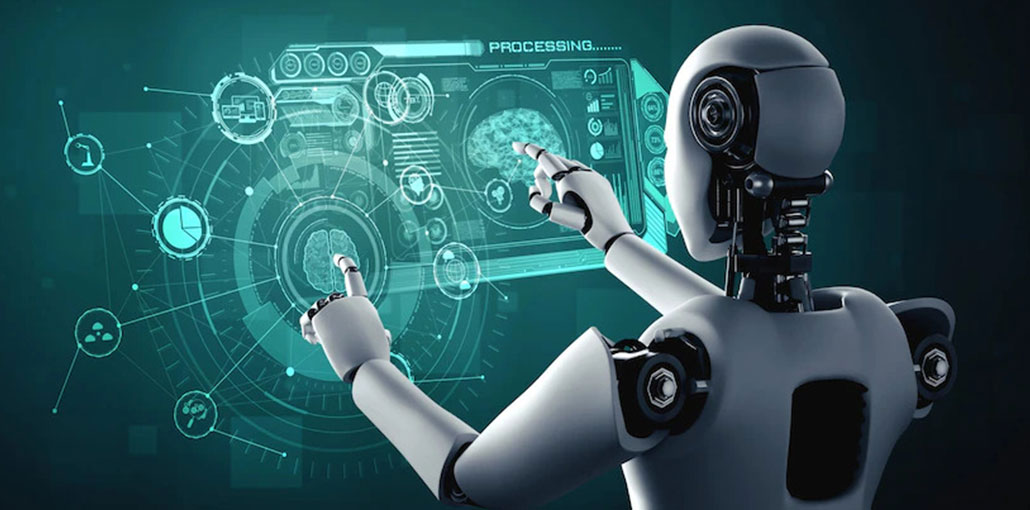Data era is here, and even if you weren’t prepared enough, we can help you get on board. While money may have made the world turn, all that is needed in modern times is data and information. These two concepts will allow us to collect valuable data and keep us ahead of our competition by analyzing and using it.
Analytics is essential in finance, tech, business, and technology. This can be used to analyze market movements, regardless of whether they are for large corporations or small mom-and-pop shops.
The Global Machine Learning Market is expected to grow at a compound annual rate (CAGR), of 42.08% from 2018 to 2024. The benefits of programming languages are also numerous. They allow developers to create websites that reflect their design preferences and provide the necessary functions, much like artists who work on a blank canvas.
Analytics is not only useful in these areas, but also in the area of Artificial Intelligence (AI), specifically in machine learning. It is crucial to be able to identify patterns in flashing data sets when trying to predict what might happen next. This ability is crucial in machine learning, as it allows you to predict possible outcomes and prevents errors.
These skills and knowledge in data science are great resources and tools in today’s fast-paced, ever-innovating environment. Now the question is: Where is the best place to learn and study machine learning?
This article will provide you with a machine learning roadmap that you can use to sharpen your skills and learn more about machine learning.
Machine Learning in a Nutshell
Machine learning, in general, is an area of artificial intelligence that uses data to make predictions or decisions based on past patterns. Machine learning is a method that computers can learn from past experiences and adapt accordingly to repeat the process or outcomes. It doesn’t require specific instructions, like traditional algorithms.
To put it in layman’s terms: It basically makes machines smarter by enabling their past behavior to be used to predict, learn and adapt. This is a method of creating artificial intelligence without the need to define all the rules or processes in advance.
Also read: How to Monetizing Data Through Machine Learning
Machine Learning: What are the purposes?
Machine-learning algorithms make use of historical data to predict future output values and make decisions using that information. This artificial intelligence reduces workloads in many industries such as healthcare and finance by automatically recognizing patterns in records that may otherwise go unnoticed. Machine learning allows programs to predict outcomes more accurately without having to be programmed.
Machine learning is great but its ability to predict future outcomes is what really makes it stand out.
These include stock prices and market demand forecasts. They can also be used as survival predictors to determine how likely someone is to survive in any given situation.
Pursuing a Career as a Machine Learning Engineer
Now that you know more about machine learning, let’s discuss its potential applications and how it could be a great career option for many. Machine learning engineers and experts are in high demand. These professionals have the skills to help companies achieve their goals and be more productive. They can also use it to make data-driven business decisions and to build products.
This will allow us to better serve our customers’ needs. A study by LinkedIn shows that the number of machine-learning engineers has increased 9.8x over the past five years. They claim data science and ML are creating more job opportunities than there are applicants right now, making them today’s fastest-growing technology to find employment.
Glassdoor lists Machine Learning Engineer positions among the 50 Best Jobs in the USA for 2022, with a median Salary Base of $130,489.If you are eager to learn machine learning and excited about the future, This is the ideal time to begin learning about this field in order to be ready for future innovations and developments.
Your Machine Learning Roadmap
1. Getting familiar with the Fundamental Theories, Concepts & Technologies
Understanding machine learning and its principles and workings are best done by understanding the theories, concepts, and algorithms that underpin it. These are the fundamental building blocks of machine-learning models that you will see in a machine-learning system.
A good idea is, to begin with, a brief overview of these elements in order to have a solid understanding of all the mathematical concepts that you will be learning in future articles or courses. Before you understand machine learning algorithms and how they work, you will need to be able to master linear algebra, statistics, and probability. Our data science Bootcamp program can also be helpful in enhancing your machine learning skills to an exceptional level.
Once you have a solid understanding of these concepts, you can start to explore machine-learning models which are frequently used in real life.
These are the basics that you should know before you start your ML journey.
- Standard Deviation: This is a common metric in statistics that measures the variability or dispersion of a set of data from its mean.
- Linear Algebra: Linear algebra refers to mathematics that deals with vector spaces and Linear mappings between these spaces.
- Statistics: Statistics is a study that deals with the analysis, interpretation, presentation, and collection of data.
- Probability: Statistics refers to the mathematical branch that analyzes random phenomena.
Also read: What is Machine learning Bias and Where Can We See It?
2. Understanding Machine Learning Algorithms
Algorithms are instructions that tell machines what to do in machine learning. They can be as simple and straightforward as “if X proves true, then do Y”, or they could be more complicated with conditionals and iterations.
Machine learning algorithms rely on processing data points and having an output for each one (for example, classifying spam emails as spam) and then using mathematical models to predict future outputs.
Here’s a list of some of the most popular algorithms and processes that are taught in machine learning.
- Linear Regression: Linear Regression is a method of modeling the relationship between variables. Linear regression is a method of fitting linear models to data to make predictions.
- Logistic Regression: Logistic analysis is a probabilistic classification algorithm that assigns class values to new observations to increase the likelihood that the input data has been correctly classified.
- Support Vector Machines: SVM (Support Vector Machines) is a method for solving supervised learning issues with discrete or categorical inputs. Support vectors are those training examples closest to the margin.
- Clustering: This is a method for finding subgroups within your data. Clustering works by taking a group of points and finding which belong together based upon their proximity.
3. Selecting a Machine Learning Basis
You can begin to understand concepts and theories. Now is the best time to decide which machine-learning practice to focus on.
This broad range of topics is what you can use for now:
- Supervised Learning: Supervised Learning is a form of machine learning in which the computer is given training data and is required to learn how to convert these inputs into the desired outputs.
- Unsupervised Learning: This type of machine learning involves a computer being given data, but not being told what the outputs should look like. It is important to data discover structure and then learn from it.
- Classification: Using labeled examples, classification is the process of classifying an item to determine its category. These labels include spam vs. not spam, malignant tumors vs benign tumors, and so on.
- Pattern Recognition: This is the machine-learning task of recognizing patterns in data. Data can be divided into input variables, such as pixels, and target variables, such as whether or not a cancer is malignant.
Recommender Systems: These are systems that can predict which items a user will like based on a set of preferences. This system is used extensively in the Netflix Prize, search engines such as Google and Bing, and on social networks to predict friend recommendations. - Imitative Learning: Imitative learning is a way to learn from examples. It is based on observations of the behavior of an expert to learn how to do tasks without being taught how to solve them.
4. Mastering Machine Learning Libraries
Your machine learning library is the foundation of your machine-learning application. Libraries are basically collections that contain functions. They can be used to simplify the development of machine-learning apps by offering a variety of prepackaged functions.
- Scikit-learn: Scikit-Learn, an open-source software library that enables Machine Learning with Python built-in, can run on either SciPy or NumPy.
- Theano: Theano, a Python library, allows you to efficiently define, optimize, evaluate and evaluate mathematical expressions involving multidimensional arrays.
- Tensorflow: TensorFlow™is an open-source software library that allows for numerical computations using data flow graphs, The graph’s nodes represent mathematical operations. The graph edges are multidimensional data arrays (tensors), that are communicated between them.
- PyTorch: PyTorch, a Python package, provides two high-level features. Tensor computation (like NumPy), strong GPU acceleration, and deep neural networks are created on a tape-based self-grad system.
Also read: 5 Major Machine Learning Projects That Can Help Beginners
5. Get Your Hands Dirty with Projects or Working on a Machine Learning Side Project
While you’re working on machine-learning algorithms, make sure to apply your knowledge by solving real-world problems. This can be done in many ways.
- Work with a small or startup company that requires data-driven solutions.
- How to build a data science portfolio: You can search for “data scientist resume” to see examples of resumes. Ask for assistance on Reddit and Analytics Stack Exchange.
- Find a Machine Learning Challenge: DataKind has ongoing projects in machine learning that need volunteers.
Conclusion — Machine Learning Roadmap
Machine learning is a vast field with many topics to explore. The best way to begin your machine-learning journey is to have an end goal. For example, “I want my data to be more intelligent” or “I need to create a recommendation system for my website.”
To get a better understanding of your situation, you can read articles about the topic. To get a better understanding of the whole, you can start to learn about each component individually. To get a better understanding of how these concepts work together in practice and theory, you can enroll in the Data Science Bootcamp or Python Data Science training.










Leave a comment